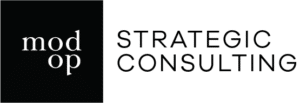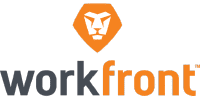Corporate inertia is often the enemy of good product development – and it often leaves critical pieces behind, such as primary market research. For the simple fact that all of us – with good intentions – want to “get the product out the door.” It’s all about reaching new customers and hitting those quarterly revenue targets.
We have also been taught that product development in the digital age requires speed. We have to be agile, work in sprints, practice rapid prototyping and launch a minimum viable product (MVP) as soon as possible.
Perfection can wait – so says the continuous integration and delivery (CI/CD) brigade.
While corporate pressures cannot be ignored and CI/CD is here to stay, companies often give short thrift to the most important ingredient for product success: primary market research.
As consultants, when we are engaged to provide strategic guidance, weigh in on product positioning or create a go-to-market strategy, we often start by asking clients a simple question: When is the last time you conducted primary market research? In other words, have you actually spoken to the customer?
Often the answer is “not for a few years” or “I’m not sure we have time” or “we already know our customers.”
Such dismissals are a mistake.
Primary market research is a key input – and based on experience, we would say the key input – for successful product development.
But how exactly does primary market research help to guide product development?
Benefits of proper primary market research
Primary market research puts the voice of the customer as a single source of truth.
Next time the CEO or other executive stands up in a meeting and says, “customers want this,” you can literally go back and “check the videotape,” as legendary NY sportscaster Warner Wolf used to say. Direct quotes and data from 50, 100 or 300 customers is the best way to align teams across a company.
It provides credibility for big decisions.
When making the case for a large investment in your next big launch, the opinion and analysis of your product team may not provide enough comfort for your CEO and finance cohorts. Actual quotes and data from a group of customers about new product features, pricing or competitor products are much harder to dispute.
You’ll find actionable insight for all aspects of product development.
While a 30-minute phone interview may seem brief, a properly constructed interview instrument will yield insights about customer pain, desirability and prioritization of features, ideal product definition, pricing, current product satisfaction (NPS or OSAT), marketing messaging, strengths and weaknesses of competitor products and next-generation capabilities.
Primary market research leads to unexpected surprises.
No matter how experienced, product teams often get stuck in the same way of thinking about their product and the overall marketplace. In our experience, customers offer some of the best ideas for new product features, partnerships, adjacent markets of opportunity and other ways to enhance the value proposition.
It provides valuable competitor intelligence and M&A.
One of the most valuable aspects of primary market research we often hear from clients is the detailed assessments about direct and secondary competitors including overall product satisfaction, best and worst features, value for price, ease of use, aided and unaided brand awareness and service quality. This insight provides critical data for competitive positioning, product benchmarking, sales strategy and possible mergers, acquisitions and partnerships.
Primary market research gives you a trove of verbatim quotes and raw data for future research.
At the end of a typical primary research effort, we provide a large raw data file and compile thousands of direct customer quotes. Armed with this data, teams can search, segment and crosstab about a range of topics for months.
- What did customers have to say about blockchain?
- Did any customer mention X competitor?
- What percent of over $100M revenue companies said they would be interested in a certain feature?
It’s all there if the primary research is sound.
It’s a value for all teams.
The benefits of primary customer research extend well beyond the scope of the product team. Marketing, sales, business development and strategy teams also benefit from this customer insight as they create and fine tune their own initiatives.
Moving from benefit to practice
As you can see, primary market research is your key to unlocking the customer insight and intelligence that will serve to guide your product development for years to come.
But perfecting this type of research takes practice. So, to help you get started, we’ve gathered our top five tips that we use to get the most out of our primary market research.
How to conduct primary market research that transforms your product development:
1. Talk to the right people. This is the #1 rule of customer research. You could have the best questionnaire, the best interviewers and ace data nerds. But if you are listening to the wrong people, you are wasting time and money – not to mention the risk of making bad product decisions.
The key to pinpointing qualified respondents is a detailed screener instrument – which selects or disqualifies respondents based on critical targeting criteria, such as industry, title, revenue, level of responsibility, years of experience and influence on key decisions. Put as much work into the screener as the interview questions.
2. Choose the right methodology. Phone interviews, online surveys, offline surveys, focus groups, customer ratings, win-loss interviews and customer experience management systems (CXMs) all have a role in product development. But for new products or major product initiatives, we suggest 30-minute phone interviews, which allow for the opportunity to ask detailed quantitative and qualitative questions and probe further in-depth as needed.
3. Frame the right scope. The right number of interviews (or N) will depend on several factors: the breadth of customer segments (by industry, geography, company size, etc.), the detail of the questions to be asked (the more detail about competitors, features, etc. the more interviews required) and the level of confidence desired.
We have conducted phone interview sets from 30 to 300. But if time and budget are a factor, even small interview sets of 30 to 50 customers can provide incredible insight and value.
4. Ask the right questions, in the right order. An interview is more than just a list of questions. Getting valuable insight requires attention to flow (moving from general to detailed questions in a way that is logical and not jarring to respondents), specific question phrasing, the proper use of quantitative rating scales, good probing questions and competitor specificity. Not to mention proper oversight and management of the interview team.
5. Keep it unbiased. To avoid the data set being influenced by “friendly customers,” interviews ideally should be conducted by a third-party, with no mention of the company sponsoring the research.
Interview sets should also be split between existing customers and non-customers – so that your teams get a clear, unvarnished view of your product, competitor products and the marketplace. Remember: Customers rarely tell your sales and service teams what they really think!
Looking for more guidance?
For more information about conducting primary market research, contact Mod Op Strategic Consulting and we’ll be glad to discuss how customer insight can benefit your business.
Chris Charron, Digital Strategy Consultant
Chris is a strategic consultant specializing in digital strategy, product development and go-to-market strategy. His expertise includes customer research, customer experience benchmarking, technology evaluation, and business model assessment for digital products and services. He is a former Group VP at Forrester Research where he led the firm’s industry research teams.
Explore additional executive insights and guidance from our team of consultants, all of whom have decades of operational experience making exactly the kinds of decisions you now face, or browse the library of case studies.
Client Impact Story: Marketing Automation
Discover how Mod Op Strategic Consulting helped transform a leading law firm’s ability to produce and track its digital messaging and communication.
Client Impact Story: Improving Workflow Processes
Considering robotic process automation (RPA)? Review the process we used to introduce RPA to a leading financial publisher.
















